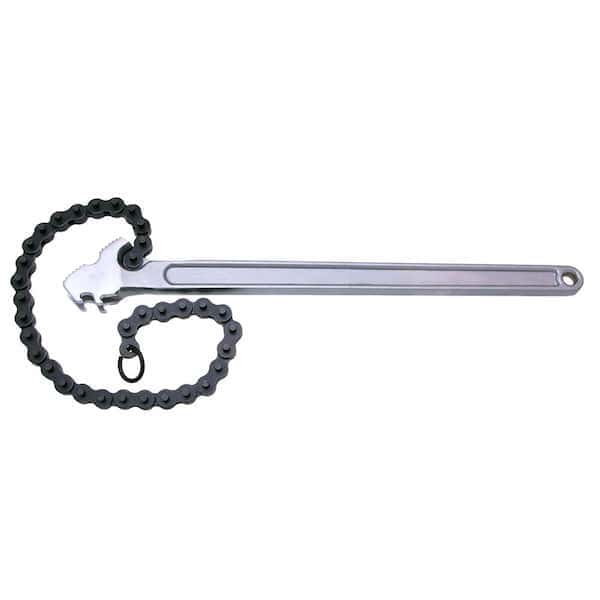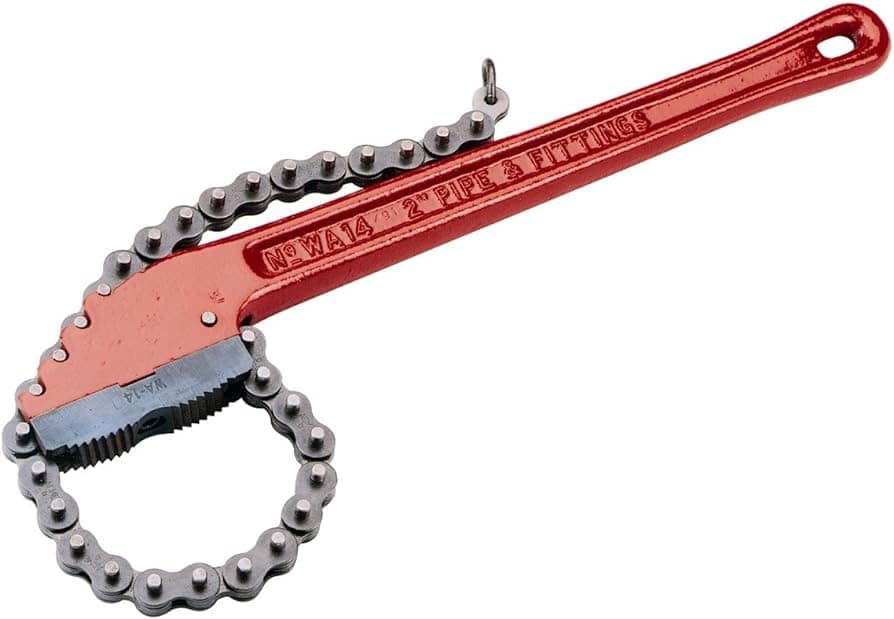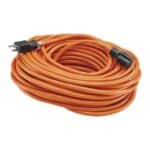A chain wrench is a handy tool for many jobs. It has a strong chain that wraps around pipes and other round things. This lets it grip tight and turn hard-to-move objects.
Chain wrenches are used to loosen or tighten large pipes and fittings. They work great on big round items that normal wrenches can’t grab. You’ll often see them used for plumbing and oil work.
These tools are tough and strong. The chain part can take a lot of force without breaking. This makes chain wrenches good for stubborn jobs where other tools might fail. They can grip odd shapes too not just round pipes.
Design and Functionality
Chain wrenches are built to grip and turn round objects. They have a unique design that lets them work on pipes and other circular parts. The chain can wrap around different sizes and shapes.
Components and Materials
A chain wrench has a handle and a chain. The handle is often made of strong alloy steel. This makes it tough and long-lasting. The chain is made of metal links that can bend.
The handle has teeth at one end. These teeth help the chain grip better. Some chain wrenches have a swivel head. This lets users work at different angles.
The chain part can be replaced if it wears out. This makes the tool last longer. Some models have a safety feature to stop the chain from flying off.
Types and Variants
There are different types of chain wrenches. Some are made for specific jobs. Others are more general-use tools.
Heavy-duty chain wrenches are big and strong. They’re used for large pipes and tough jobs. Smaller chain wrenches are good for tight spaces.
Some chain wrenches have longer handles for more leverage. Others have shorter handles for easy carrying. There are also chain pipe wrenches. These mix features of chain and pipe wrenches.
Size and Adjustability
Chain wrenches come in many sizes. The size affects what they can grip. Smaller ones work on pipes about 1 inch wide. Larger ones can handle pipes over 12 inches wide.
Most chain wrenches are adjustable. Users can change the chain length to fit different objects. This makes one tool useful for many jobs.
The handle length also varies. Longer handles give more turning power. But they’re harder to use in small spaces. Some wrenches have handles that can change length.

Applications and Usage
Chain wrenches are handy tools for gripping and turning pipes and other round objects. They work well in tight spots where other tools can’t fit. Let’s look at how people use chain wrenches in different settings.
Professional and Industrial Use
Chain wrenches are invaluable in many industrial settings. Plumbers use them to turn large pipes and fittings. Mechanics rely on chain wrenches to remove stubborn oil filters. In factories, workers use them to adjust machinery parts.
These wrenches excel at gripping oily or slippery surfaces. Their chain design provides a strong hold without damaging the object. This makes them great for delicate tasks too.
Chain wrenches come in various sizes for different jobs. Smaller ones work for home plumbing. Larger ones handle big industrial pipes. Their versatility makes them a must-have in many toolboxes.
DIY Projects and Home Maintenance
DIY fans find chain wrenches useful for many home projects. They’re great for fixing leaky pipes under sinks. You can use them to remove old shower heads or faucets.
Chain wrenches also help with car maintenance at home. They make it easy to change oil filters without scratching them. For outdoor projects, use them to tighten garden hose fittings.
These tools are simple to use even for beginners. They provide good leverage which helps with tough jobs. Always check the size you need before starting a project.
Handling and Safety
Using a chain wrench safely is important. Always wear gloves to protect your hands. Make sure the chain is clean and free of debris before use.
Inspect the wrench regularly for wear or damage. Replace it if you see any broken links or cracks. When using the wrench, keep a firm grip and stand steady.
Don’t use too much force. Let the chain do the gripping work. If something feels stuck, stop and check what’s wrong. With proper care, a chain wrench can last for many years of hard work.
Frequently Asked Questions
Chain wrenches are useful tools for many jobs. They help grip and turn pipes and other round objects. Let’s look at some common questions about chain wrenches.
How can a chain wrench assist in automotive repairs?
Chain wrenches are great for car work. They can loosen stuck oil filters and remove exhaust pipes. The chain grips tight on round parts without slipping.
What is the proper method for using a chain wrench to remove an oil filter?
To take off an oil filter:
- Wrap the chain around the filter
- Tighten the handle
- Turn the wrench to loosen the filter
- Keep turning until you can unscrew it by hand
What are the applications of a heavy-duty chain wrench?
Heavy-duty chain wrenches work on big pipes and fittings. Plumbers use them on large water mains. Oil workers use them on drill pipes. They can handle tasks that need lots of force.
How do you determine the appropriate size of a chain wrench?
Pick a chain wrench that fits your job. The chain should wrap fully around the part you’re working on. It should also have enough extra length to grip well. Bigger wrenches work on larger pipes.
In what scenarios is a 36-inch chain wrench most effectively utilized?
A 36-inch chain wrench is for big jobs. It works well on:
- Large industrial pipes
- Big truck parts
- Heavy machinery
This size gives you lots of leverage for tough tasks.
What purposes do chain tongs serve in professional plumbing?
Plumbers use chain tongs often. They help:
The chain grips well on wet or slippery pipes. This makes the job safer and easier.







